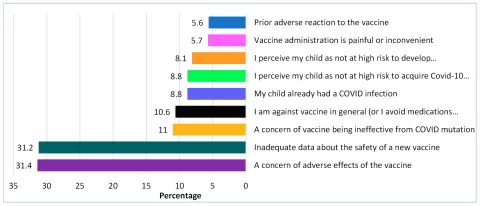Seoul virus infection, a significant zoonotic disease primarily associated with pet rats, poses emerging health risks in various regions, including Europe and beyond. As the popularity of rodents as household pets increases, so does the potential for hantavirus transmission, which can lead to severe complications like acute kidney injury. Recent reports have connected infections to pet rat breeding facilities, emphasizing the urgent need for strict monitoring and a One Health approach that integrates both human and animal health strategies. With a spectrum of symptoms ranging from mild febrile illness to severe renal complications, the silent nature of many cases raises concerns about underdiagnosis in the population. Increased public awareness and preventive measures surrounding pet rat diseases are crucial to mitigate the risks associated with this little-known viral infection.
The Seoul virus, an orthohantavirus primarily linked to rodent infections, has garnered attention as a prevalent threat among pet owners, particularly those with pet rats. As evidence mounts about hantavirus transmission through various pathways, many are becoming increasingly alert to the potential health implications. This viral infection can encompass a range of symptoms, making it vital for clinicians to recognize and address it in patients presenting with unexplained illness. Furthermore, the interconnectedness of wildlife, domestic animals, and humans highlights the importance of a comprehensive One Health perspective. Now, more than ever, it is essential to promote awareness of zoonotic diseases like Seoul virus infection, as understanding and prevention efforts are crucial for safeguarding public health and animal welfare.
Understanding the Seoul Virus Infection
The Seoul virus infection is a significant public health concern, particularly as it relates to pet rats, which have become popular companions for many families. Hantaviruses, including SEOV, are zoonotic diseases primarily transmitted through rodent feces, urine, and saliva. Infections often occur when individuals are exposed to environments contaminated with these bodily fluids. The recent case of a woman suffering from severe acute kidney injury in Germany highlights the potential severity of this infection, particularly in cases linked to breeding facilities. Infection with the Seoul virus can manifest in various clinical forms, ranging from mild symptoms to severe conditions requiring medical intervention.
The clinical features of SEOV infections may mimic other diseases, making diagnosis a challenge. Symptoms can range from non-specific febrile illness to serious complications such as hemorrhagic fever and acute kidney injury. Given the rising number of pet rats in households, proper education and awareness about the risks associated with owning these animals are critical. Understanding how hantavirus transmission occurs and the potential health implications can enhance preventive measures among pet owners and encourage a One Health approach, focusing on the interconnected health of people, animals, and ecosystems.
The Link Between Pet Rats and Zoonotic Diseases
Pet rats, while popular as low-maintenance pets, can carry zoonotic diseases, including the Seoul virus, which poses significant health risks. The case study from Germany illustrates how a seemingly innocent visit to a pet rat breeding facility led to a severe infection in a previously healthy individual. This underscores the necessity for increased surveillance and regulation of pet rat breeding facilities, as these environments can harbor pathogens that are transmitted to humans. Increased awareness about pet rat diseases is essential for pet owners, as they may unknowingly expose their family and friends to health risks.
A One Health approach emphasizes the need for collaboration among veterinary professionals, public health authorities, and pet owners to mitigate the spread of zoonotic diseases. By understanding the health implications of sharing spaces with pet rats and adopting protective strategies, such as hygiene practices and proper animal care, the risk of hantavirus transmission can be significantly reduced. Strategies to educate pet owners about the signs of illness in their animals and the potential background of their pets can help in early detection and prevention of outbreaks.
Frequently Asked Questions
What is Seoul virus infection and how is it transmitted?
Seoul virus infection is caused by the Seoul virus (SEOV), a zoonotic pathogen primarily transmitted through contact with infected rodents, especially Norway rats and pet rats. Transmission occurs via inhalation of aerosolized virus particles from rodent excreta, making it essential to implement strict hygiene practices in environments where rats are present.
What are the symptoms of Seoul virus infection?
Symptoms of Seoul virus infection can range from mild febrile illness to severe conditions like hemorrhagic fever with renal syndrome (HFRS). Common symptoms include fever, fatigue, diarrhea, and acute kidney injury, which may necessitate medical interventions such as hemodialysis.
How does Seoul virus infection relate to acute kidney injury?
Seoul virus infection can lead to acute kidney injury (AKI), a significant clinical manifestation in some patients. Evidence has shown that SEOV can cause severe acute tubular injury, as observed in cases where patients required hemodialysis due to deteriorating kidney function related to the virus.
Can pet rats be a source of Seoul virus infection?
Yes, pet rats can be a significant source of Seoul virus infection. The increasing popularity of pet rats has raised concerns, as breeding facilities may harbor the virus. Transmission can occur to humans through direct contact or aerosols during exposure to the rats’ environment.
What is a One Health approach in relation to Seoul virus infection?
A One Health approach emphasizes the interconnectedness of human, animal, and environmental health. In terms of Seoul virus infection, this involves enhanced surveillance in pet rat breeding facilities, public education on zoonotic disease risks, and the implementation of strict hygiene protocols to reduce transmission risk.
What preventive measures can be taken to avoid Seoul virus infection?
To prevent Seoul virus infection, individuals should use damp cleaning techniques to avoid aerosolization of the virus, avoid contact with wild rats, and ensure proper ventilation in rodent housing. Immunocompromised individuals should be cautious about keeping pet rats. Raising awareness about zoonotic diseases among veterinarians and pet owners is also crucial.
How prevalent is Seoul virus infection in Germany?
Despite being globally distributed, Seoul virus infection in Germany remains rare, with only a few documented cases. However, the rise in pet rat ownership calls for increased vigilance and surveillance to detect and prevent potential outbreaks.
What diagnostics are used for detecting Seoul virus infection?
Diagnosis of Seoul virus infection typically involves serologic assays to detect hantavirus antibodies and molecular testing, such as reverse transcription PCR, for detecting viral RNA in blood or urine samples. This helps confirm the presence of SEOV and assess potential sources of infection.
| Aspect | Details |
|---|---|
| Case Overview | A healthy 44-year-old woman developed severe acute kidney injury after acquiring pet rats from a breeding facility. |
| Source of Infection | Linked to exposure at a private pet rat breeding facility in central Germany. |
| Symptoms and Diagnosis | Symptoms included fever, fatigue, diarrhea, and hypotension. Laboratory tests showed thrombocytopenia and acute kidney injury. |
| Histopathology Findings | Histological examination showed severe acute tubular injury with positive hantavirus antigen staining. |
| Epidemiologic Investigation | Identification of the breeding facility as the infection source; other family members tested negative for hantavirus. |
| Public Health Implications | Increased surveillance of pet rat breeding facilities and awareness about zoonotic risks among pet owners is needed. |
Summary
Seoul virus infection is a growing concern, particularly with the rising popularity of pet rats. This case study highlights the severe outcomes associated with Seoul virus, including acute kidney injury that required hemodialysis. The findings underscore the necessity of enhanced surveillance and public education regarding the risks of zoonotic diseases from pet rats. Educational initiatives and preventive measures should prioritize the health and safety of both humans and animals involved.
The content provided on this blog (e.g., symptom descriptions, health tips, or general advice) is for informational purposes only and is not a substitute for professional medical advice, diagnosis, or treatment. Always seek the guidance of your physician or other qualified healthcare provider with any questions you may have regarding a medical condition. Never disregard professional medical advice or delay seeking it because of something you have read on this website. If you believe you may have a medical emergency, call your doctor or emergency services immediately. Reliance on any information provided by this blog is solely at your own risk.








